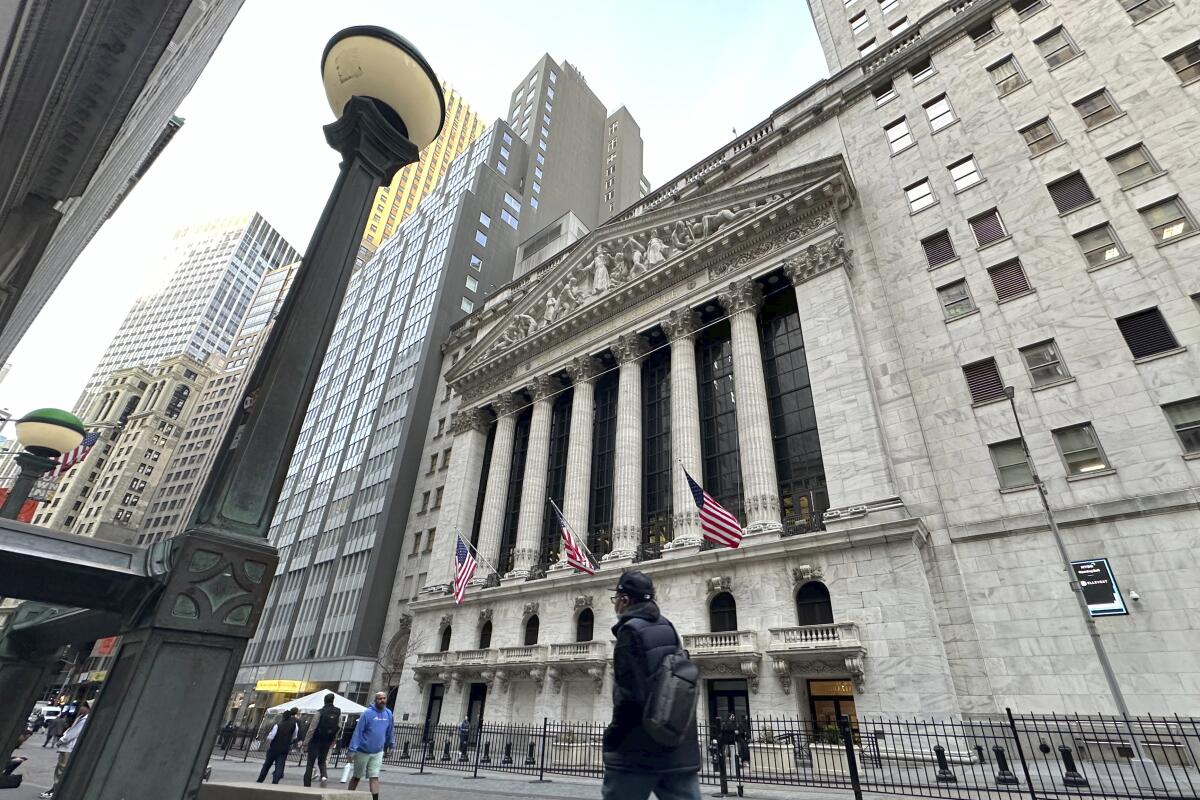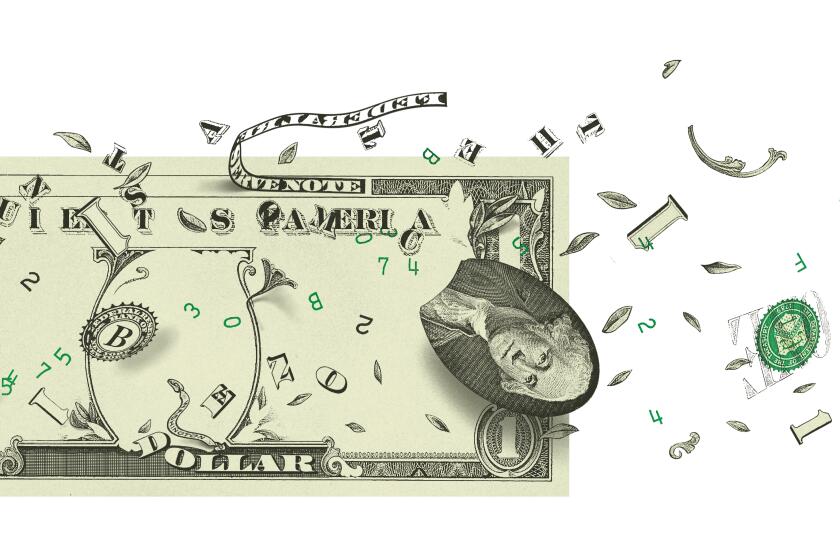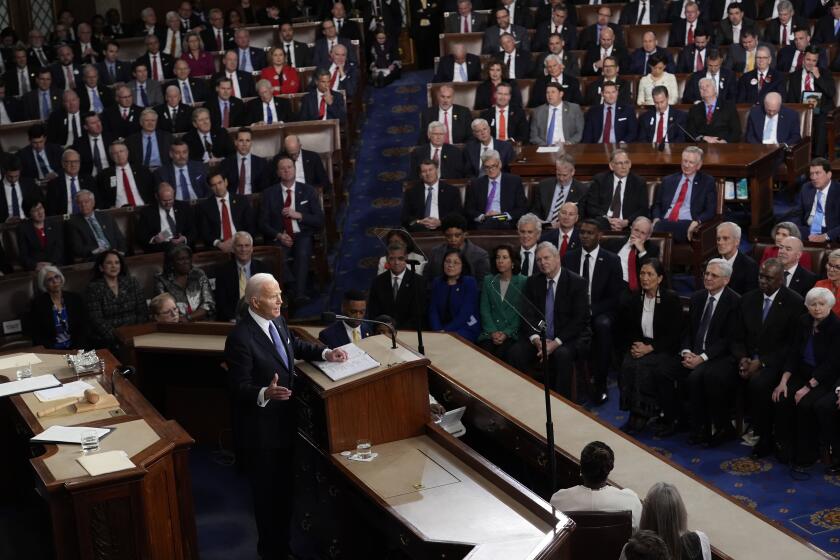Wall Street drifts to a mixed close, holding near record levels

U.S. stocks drifted to a mixed finish Wednesday, as a lull carried through financial markets worldwide.
The Standard & Poor’s 500 slipped 9.96 points, or 0.2%, from its all-time high set a day before to 5,165.31. The Dow Jones industrial average rose 37.83 points, or 0.1%, to 39,043.32 and pulled within 90 points of its record set last month. The Nasdaq composite dipped 87.87 points, or 0.5%, to 16,177.77.
The bond market was also relatively quiet, with Treasury yields ticking higher, while stock markets abroad were mixed after making mostly modest moves.
The biggest action may have been in the oil market, where a barrel of benchmark U.S. crude climbed $2.16 to settle at $79.72. Brent crude, the international standard, rose $2.11 to $84.03 per barrel.
Oil prices have been on a general upswing so far this year, which has helped keep inflation a bit higher than economists expected. That higher inflation has in turn dashed Wall Street’s hopes that the Federal Reserve could start offering relief at its meeting next week by cutting interest rates.
Batten down the hatches: We’re facing “economic headwinds.” Why are so many corporate leaders suddenly using this euphemism when announcing layoffs?
But the expectation is still for the Fed to begin cutting rates in June because the longer-term trend for inflation seems to remain downward. The Fed’s main interest rate is at its highest level since 2001, and reductions would release pressure on the economy and financial system. Stocks have already rallied in part on expectations for such cuts.
Their nearly nonstop run since late October, though, has raised criticism that it was overdone. The U.S. stock market was recently looking more expensive than it has in 99% of its history by a measure that looks at prices versus long-term earnings for companies, according to Jeremy Grantham, co-founder of GMO.
The famed investor, who has a reputation for being cautious but also correctly predicted the popping of prior bubbles, says the long-run prospects for the broad U.S. market “look as poor as almost any other time in history.”
“The simple rule is you can’t get blood out of a stone,” he wrote in a recent report. “If you double the price of an asset, you halve its future return.”
On Wall Street, where the S&P 500 has jumped 44% since hitting a bottom in 2022, Dollar Tree tumbled 14.2% after reporting weaker results for the latest quarter than analysts expected.
Nationally, the U.S. had another strong month of job growth in February, but California has trailed the nation and its unemployment rate is substantially higher.
Traffic increased at its stores, but it said customers bought less at each purchase than they did a year ago. The company also said it will close about 600 of its Family Dollar stores in the six months through early August.
On the winning side of Wall Street was Williams-Sonoma, which jumped 17.8%. The company, which also operates Pottery Barn and West Elm stores, increased its dividend 26% and announced a new authorization to buy back up to $1 billion of its stock. It also delivered a stronger profit for its latest quarter than analysts expected, despite the drag of a slower housing market.
Stocks of energy producers were also strong, benefiting from the rise in oil prices. Those in the S&P 500 rose 1.5% for the biggest gain among the 11 sectors that make up the index.
Valero Energy climbed 5.2% and Marathon Petroleum added 3.1%. A 1.1% rise for Exxon Mobil was one of the stronger forces pushing upward on the S&P 500.
A majority of stocks in the S&P 500 ended up rising, but the index was weighed down by losses from some tech behemoths and other influential members. Nvidia slipped 1.1% and was one of the strongest forces pulling the S&P 500 lower.
Americans are now importing more from Mexico than China. That means more goods are coming by truck through Texas, and less cargo enters the Southland’s ports.
In the bond market, the yield on the 10-year Treasury rose to 4.18% from 4.15% late Tuesday. It helps set rates for mortgages and loans for all kinds of companies and other borrowers.
The two-year Treasury yield also climbed. It more closely follows expectations for the Fed, and it rose to 4.62% from 4.58% late Tuesday and from 4.20% at the start of February. It had earlier dropped on strong expectations for coming cuts to interest rates by the Fed.
In stock markets abroad, indexes made mostly modest moves across Europe and Asia. Stocks rose 0.6% in Paris and 0.4% in Seoul but slipped 0.4% in Shanghai.
Choe writes for the Associated Press. AP reporter Yuri Kageyama contributed to this report.
More to Read
Inside the business of entertainment
The Wide Shot brings you news, analysis and insights on everything from streaming wars to production — and what it all means for the future.
You may occasionally receive promotional content from the Los Angeles Times.













